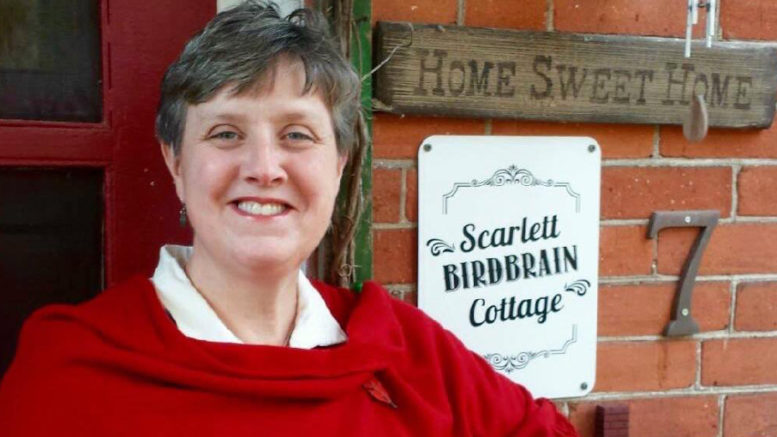Laurie Snider
Notes from the Nest
I could feel the cold draft on my bare ankles, as I ambled across the kitchen, to switch on the coffee maker, on what feels like Day 130 and thirty of this cold, arctic blast we’re currently enduring. As I do each morning, I peaked out the kitchen window to see which birds were enjoying a breakfast buffet of seeds, suet and peanuts.
Once I let the dogs out the door, their explosive exit sends the birds and squirrels off in all directions, nine ways to Sunday! This morning, I was lucky. I saw a bright flash of red, streak across my field of vision. Romeo, my frequent, resident, male cardinal lighted on the trellis, peering at the tasty selection of feeders, in front of him. In an instant, he chose a colourful, hanging one, filled with delectable and fattening, black oil sunflower seeds,
Next came the jays. One, two, three…. five, six, like so many fighter jets landing perfectly onto the deck of an aircraft carrier. They were all noisily squawking, as they lined up waiting their turn to snatch their favourite, peanuts in the shell, hanging in the wreath feeder.
The handsome woodpeckers, Harry and Gord Downie, (hairy and downy woodpeckers respectively), were hammering their bills, nearby each other. They were working on hearty, cakes of suet, filled with nutritious fat and seeds. A host of other birds, chirped cheerily as they snacked on seeds scattered on the ground; juncos, mourning doves and a charm of finches. nuthatches and chickadees, swooping in to munch on their fill, rounded out the gathering. I adore them all.
The changing climate has changed our winters and huge dumps of snow and bitterly cold temperatures aren’t necessarily the norm. When it does happen, it sometimes catches us off guard. Thankfully, often all that’s required is extra layers or keeping the fire stoked to stay warm. Our feathery friends also have special methods to deal with frigid, wintery conditions.
Birds have many physical adaptations that aid in their efforts. To begin with they are warm blooded animals with higher body temperatures of 40 degrees Celsius and higher metabolisms. Their feathers are remarkable insulators and many birds grow extra ones in the fall. They produce an oil which coats their feathers and adds warmth and waterproofing. Bird legs and feet are covered in scales which also minimizes heat loss.
They also use other innovative methods to fend off the cold. Perhaps you’ve noticed puffy little birds at your feeders like I have. Fluffing out their feathers like this creates air pockets which helps keep them toasty. Exposing their backs to the sun to take advantage of solar heat is another method they employ, as is standing on one leg or tucking their bills under a wing, to breath in warmer air.
Sometimes smaller birds gather together with others on cold nights to snuggle, in small, tight places to conserve heat. While others go into a state of torpor, which lowers their temperatures and metabolisms, using less energy. Despite nature’s marvelous wonders, some still succumb to the cold.
Birds do not require humans feeding them, to survive. However, having access to extra supplies of fattening food and liquid water can certainly help, requiring them to use less of their precious energy. Keeping feeders full and having a heated bird bath is like a day at the spa, for them. Coniferous trees, evergreen shrubs and roosting boxes for protection and shelter can also benefit them on their daily quest to stay warm. Their beauty, grace, agility and antics, enrich my days and delight me. Any efforts I’m able to offer to keep them comfortable, are gladly given.
I would like to send out love, hugs and support for my friends at Sandy Pines Wildlife Center, Sue, Leah, Julia and Tess after their barn fire, last Friday. I’m in awe of their courage and bravery, as they rescued the livestock from the burning building.
I went over on Friday afternoon to lend a hand and was amazed at their strength, calm and professionalism. They continued accepting new patients and were busy looking after the current 140 patients in their care, with their usual competence, compassion and dedication. They wished to send thanks to the fire services, police and paramedics that responded to the call and are grateful for all they did fighting the fire and keeping people safe. They also wanted to thank the many supporters who answered the call for hay and straw, pallets and a hay wagon, as well as financial donations.
Anyone wishing to contribute can go to their Facebook page. I’m certain that, together with our caring community, they will ensure repair and rebuilding occur in a timely fashion, as they continue their mandate of caring for wildlife in need.

